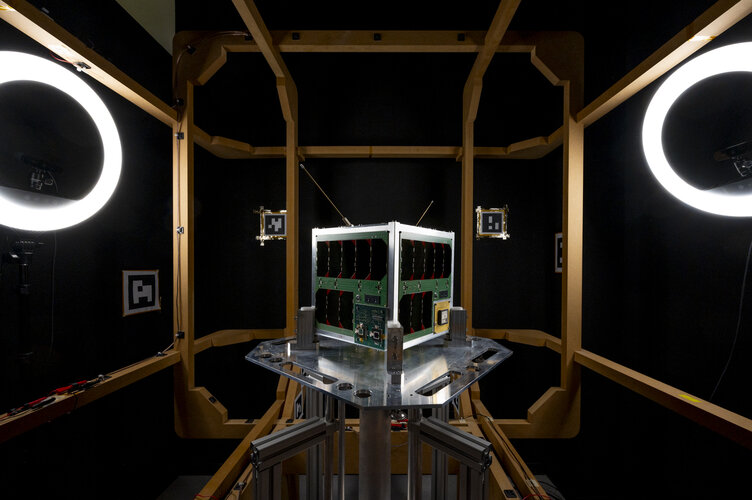
The mission will also test image processing in orbit using Artificial Intelligence (AI) – an important and time-saving ability that would mean data on wildlife monitoring can be processed by the satellite in orbit, rather than later on the ground.
The satellite will also test and verify new cost-effective and efficient perovskite solar cells, verify a wide-angle camera with autofocus – a necessary prerequisite for docking manoeuvres necessary for future service missions to refuel, repair or reorbit satellites. Also important for future on-orbit service missions, OOV-Cube will verify an ‘L-band’ radio system for communications between satellites in low-Earth and geostationary orbits.
“OOV-Cube will be the sixth satellite in a series I have been working on, and the most demanding so far in terms of its payloads”, continues Walter.
“The moment the first data come down successfully brings up a lot of positive emotions. And for this mission, there’s the added pride that we are doing something important for the environment.”
Ariane 6 is planned to launch in June-July 2024. It follows the hugely successful Ariane 5, Europe's principal rocket for more than a quarter century, flying 117 times between 1996 and 2023 from Europe's Spaceport in French Guiana.
Ariane 6 has been designed for all possible futures. At its core is maximum versatility. It can put any satellite or payload into any orbital path. This is made possible with the new restartable Vinci engine that will power up the Ariane 6 upper stage again and again, stopping and starting to insert missions into any orbit they need to be. It will save enough fuel for a final burn to deorbit and reenter safely back through Earth’s atmosphere, or reorbit into a nearby ‘graveyard orbit’.
"We're genuinely excited about this upcoming opportunity to fly on Europe’s new rocket, Ariane 6,” says Enrico Stoll, Chair of Space Technology at the Technical University of Berlin.



